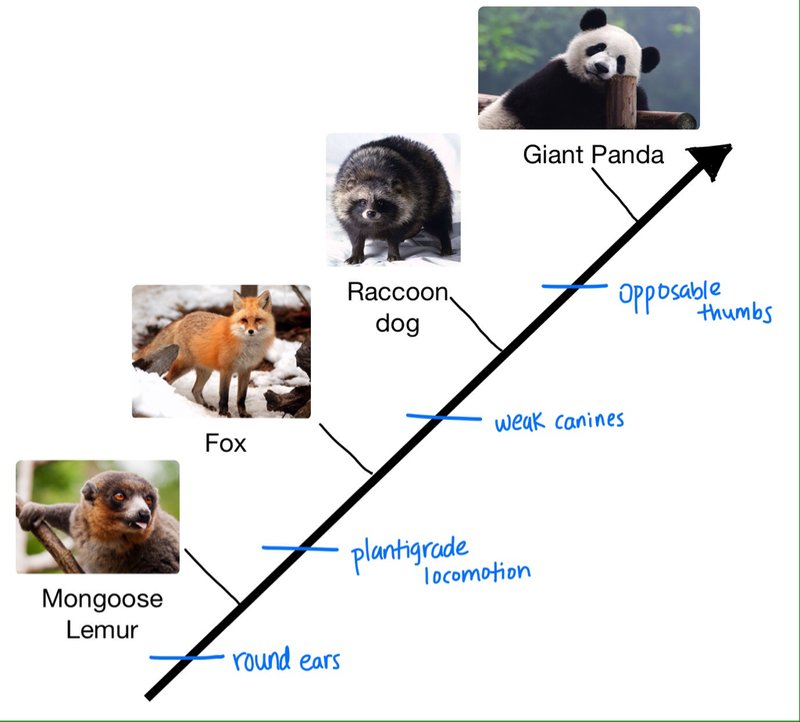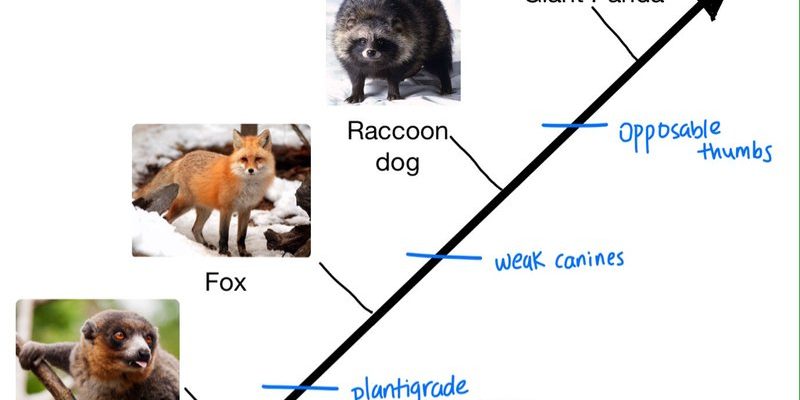
Langurs belong to the *cercopithecidae* family, which is better known as the Old World monkeys. They’re scattered across various parts of Asia, with different species showcasing unique traits that help them thrive in their local habitats. The journey of the langur isn’t just about survival; it’s a tale of how evolution shapes life in ways that can be mind-blowing. You might be surprised to learn just how much diversity exists within this group, reflecting a rich tapestry woven through time.
Understanding Langurs: A Brief Overview
So, what exactly are langurs? They’re medium to large-sized monkeys primarily found in the forests, mountains, and grasslands of the Asian continent. Langurs are characterized by their long tails, slender bodies, and striking facial features. Think of them as the graceful dancers of the monkey world, with their agile movements and elegant postures.
Langurs belong to the subfamily *Colobinae*, which includes several species, like the gray langur, black-faced langur, and the endangered golden langur. Each species has adapted to its environment, showcasing different behaviors and physical traits. For instance, gray langurs are often spotted in urban areas, skillfully navigating human-dominated landscapes.
One fascinating aspect of langurs is their diet. Being primarily herbivores, they consume leaves, fruits, and flowers, expertly navigating their way through treetops to forage. Their digestive systems are specially adapted to handle tough plant materials, allowing them to thrive where other animals may struggle. This adaptability is a key player in their evolutionary journey.
Early Ancestors: The Roots of Langurs
To understand langurs today, we have to travel back millions of years to their ancestors. The story begins around 20 to 30 million years ago when the common ancestors of modern monkeys roamed the Earth. These primates were small, tree-dwelling creatures who relied on their agility to escape predators and find food.
As these early monkeys spread across different continents, they began to evolve into various distinct species. For langurs, their evolutionary path took them to Asia, where they adapted to diverse environments. Unlike their relatives, the New World monkeys found in the Americas, langurs developed unique characteristics tailored to their habitats, such as their long tails that aid in balance while navigating through trees.
During this early phase of evolution, langurs started to diverge from their common ancestors with other primates. The development of their specialized digestive system and social structures can be traced back to this time. The ability to thrive in various environments allowed them to flourish in Asia, paving the way for the diverse species we see today.
Evolutionary Traits: What Makes Langurs Unique
Langurs have developed some really interesting traits over time. One significant evolutionary feature is their social structure. Most langur species live in groups, known as troops, which can vary widely in size. These troops help them protect against predators while also providing social interaction. Isn’t it fascinating how they work together, much like a community?
Another unique trait is their impressive vocal range. Langurs communicate through various calls, which serve different purposes, from warning others of danger to attracting mates. This vocalization has evolved as a way for them to maintain social bonds and coordinate activities within their groups.
Additionally, the langur’s physical adaptations, like their long limbs and prehensile tails, make them exceptional climbers. These adaptations not only help them escape predators but also enable them to find food efficiently in their foliage-rich habitats. Honestly, it’s like they were designed by nature for living in the trees!
Adaptation and Survival: Langurs in Changing Environments
As we move through the timeline of langurs, it’s essential to highlight how adaptable these creatures are. Their ability to thrive in various environments, from dense forests to urban areas, is a testament to their evolutionary success. Langurs have found ways to coexist with humans, often seen in parks or city outskirts foraging for food.
In some regions, langurs face challenges due to habitat loss from deforestation and urbanization. However, their flexible feeding habits and social structures have allowed them to adapt. For example, some langur troops have learned to forage for food scraps in human-populated areas, showing incredible resourcefulness.
Furthermore, their social dynamics play a crucial role in their survival. Langurs often exhibit complex behaviors when interacting with other species. Some have formed mutualistic relationships with other animals, benefiting from a shared habitat. This adaptability not only strengthens their survival chances but also enhances their evolutionary journey.
The Significance of Langurs in the Ecosystem
Langurs aren’t just interesting primates; they play a vital role in their ecosystems. As herbivores, they contribute to maintaining plant diversity by helping with seed dispersal. When they consume fruits and leaves, they aid in the growth of new plants, promoting a healthy ecosystem.
Moreover, langurs serve as prey for larger predators, creating a balance within their food webs. Their presence indicates a healthy environment, and studying their behaviors can give scientists insights into ecosystem health. Isn’t it amazing how interconnected everything is?
In many cultures, langurs also hold cultural significance. From ancient texts to modern folklore, these creatures are often revered for their intelligence and agility. This connection with humans adds another layer to their importance in our world.
Conservation Efforts: Protecting Langurs for Future Generations
Despite their adaptability, many langur species face threats to their survival. Habitat loss, poaching, and human-wildlife conflict have placed considerable pressure on their populations. Conservation efforts are essential to ensure that these fascinating primates continue to thrive in their natural habitats.
Various organizations are working to protect langurs through habitat restoration, anti-poaching initiatives, and community education. Awareness programs help local communities understand the importance of protecting these primates and their environment. When people are educated about the benefits of preserving nature, they become more inclined to take action.
You might be wondering how you can help. Supporting wildlife conservation organizations, reducing your carbon footprint, or simply spreading the word about the importance of langurs can contribute to their protection. Every little bit counts in the fight to preserve our planet’s rich biodiversity.
Final Thoughts: The Journey of the Langur
The evolutionary history of the langur is a captivating tale of adaptability, survival, and connection to the environment. From their origins as small, tree-dwelling primates to their sophisticated social structures today, langurs remind us of nature’s incredible ability to evolve and thrive in changing conditions.
As we continue to learn more about these fascinating creatures, we should also recognize our responsibility to protect them. By understanding their history and ensuring their conservation, we can help secure a future where langurs and their ecosystems flourish. So next time you hear about these remarkable monkeys, remember that their journey is not just about survival—it’s a story of resilience that we can all be a part of.

